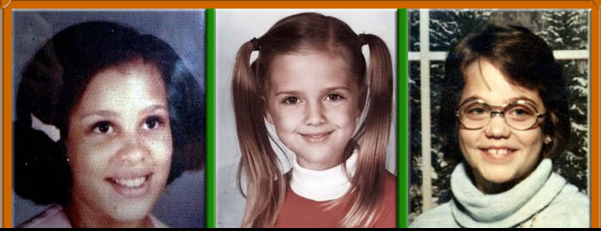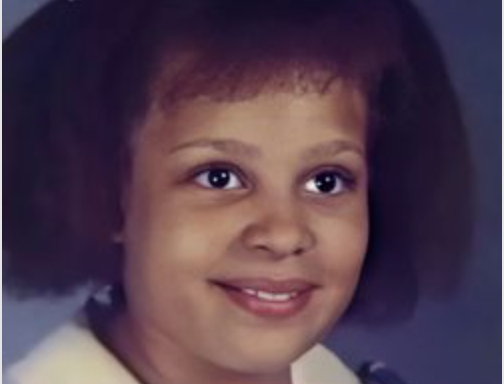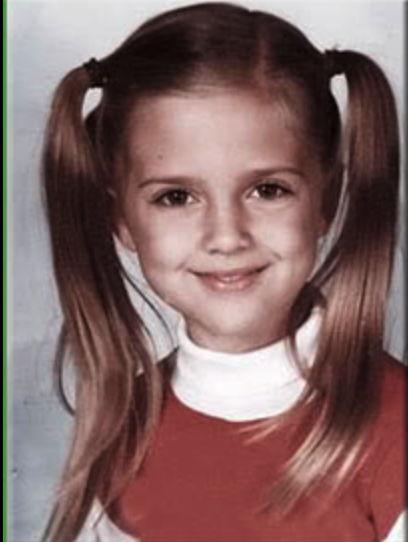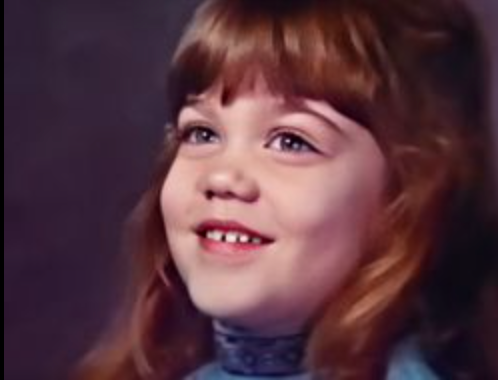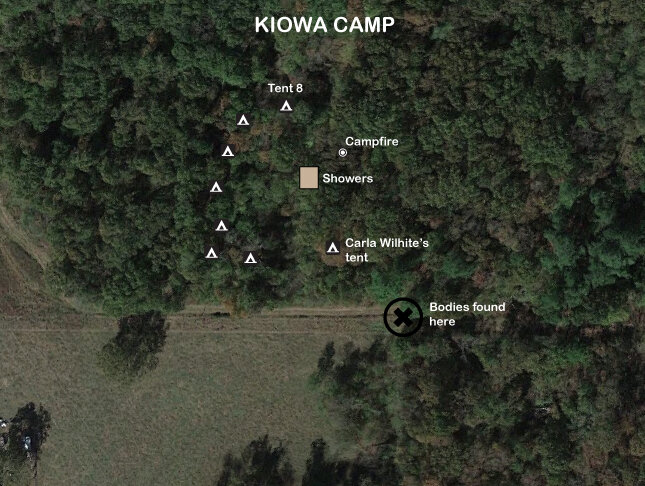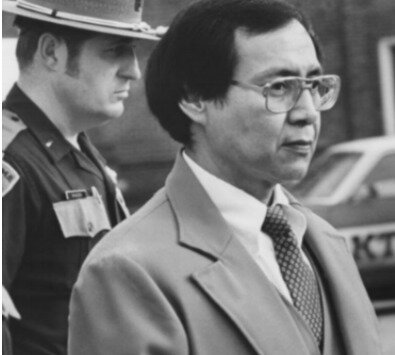
True Crime in the Great Outdoors
The most shocking crimes from national parks, camping trips, backpacker murders, and hiking incidents
The Oklahoma Girl Scout Camping Murders
Updated May 2022
In June 1977, three young Girl Scouts attended summer camp for two weeks at Camp Scott, Mayes County, in the Ozark Hills of Oklahoma.
They were brutally sexually assaulted and murdered in their tent number 8, in the Kiowa sub-camp, under the nose of camp counselors.
A native American man called Gene Leroy Hart was eventually tried for the killings but acquitted, with allegations of both a botched investigation and a rigged jury. Who was responsible for these infamous and terrible murders in the beautiful forest around Camp Scott? Was it Hart, or did the authorities miss crucial leads which might have led to another suspect?
In an update reported in May 2022, the latest DNA testing in the case done in 2019, although officially inconclusive, strongly suggested Hart’s involvement in the murders while eliminating several other potential suspects. Apart from Gene Hart, there was no other suspect in the case that DNA, an alibi, or other evidence had not excluded. Therefore, it is likely that Hart was the perpetrator of the crimes, although investigators will never know for sure.
What was and where was Camp Scott?
Camp Scott opened in 1928 for girls from 10 to 18 years of age, and it was located a few miles south of Locust Grove, Oklahoma.
In 1977, it was being run by the Magic Empire Girl Scout Council and had grown to include ten campsites, a Great Hall, and a swimming pool. Situated within 410 acres on the left bank of Snake Creek, each camp was placed near the main thoroughfare, ‘The Cookie Trail”. The sites were given Native American tribe names and consisted of canvas tents on wooden platforms, roughly set around a stone-encircled campfire, with enough room for four kids to share each tent.
The girls would find themselves new friends within their tribe, safely overseen by counselors who would have their own tent. The camp layout meant that the tents were not evenly spaced, nor were the campsites placed equally along the Cookie Trail.
Kiowa camp was set furthest west and more isolated away from the trail than the others.
Arrival at the camp
On June 12th, around 140 Girl Scouts departed from the Magic Empire Council building in Tulsa, Oklahoma, heading to Camp Scott.
Carla Wilhite, 18, Susan Ewing, 18, and Dee Elder, 20, were assigned as counselors to Kiowa camp and asked to look after 27 children.
Lori Lee Farmer, 8, Michele (or Michelle) Heather Guse, 9, and Doris Denise Milner, 10, were given tent 8. Within Kiowa camp, tent 8 was slightly apart, and the shower block obscured the view from the counselor's tent.
Doris Denise Milner
Lori Lee Farmer
Michele Heather Guse
A thunderstorm hit the area that night, and the girls spent time in their tents writing letters back home and chatting between themselves before they went to sleep.
At some time before 10 pm on June 12, 1977, the counselor of Comanche camp saw a light in the forest moving north towards Kiowa camp, but she was not sure what it was. Then at 10 pm, Dee Elder made a tent check of the Kiowa sub-camp and satisfied herself that everything was fine. Two hours later, at around midnight, Carla Wilhite escorted some girls from the toilets to their tents.
Carla warned the girls in tent six to stop making noise at 1.30 am, and at the same time, she heard a strange sound coming from behind the tents. It was described as a low, guttural sound, but she was unsure whether it was an animal or a human. When she shone her torch in the direction of the noise, it stopped. She then returned to her tent to sleep. But she continued to hear the noise intermittently.
Around 3 am, there are two reports of girls in other camps being woken by noises. One report is of a single scream (maybe earlier, around 1 am), and the other is of a girl crying out for her mother.
Around the same time, someone was moving through Kiowa camp, reaching into tents and stealing items, purses and several pairs of prescription glasses.
The last story from a surviving witness is from the girls in tent 7, who said their tent flap was pulled back, and a man shone a light into the tent. After a few seconds, the flap was replaced, and he moved on to tent 8.
Discovery of the bodies
Tent 8, Camp Scott
Carla Wilhite’s alarm went off at 6 am so she could shower before her girls woke up. She headed east towards Quapaw camp and the Staff House. As she did so, she spotted something at the trail's fork. Initially thinking someone had dropped some of their kit, she walked over to investigate. As she approached the bundles, she could suddenly make out the body of a girl lying next to them, face up and naked from the waist down.
After realizing she had discovered a body, Carla immediately woke Dee and Susan to help her with a check on the other children. Dee started by checking tent 8, where she quickly discovered all three children were missing.
Carla headed for the nurse’s station, and as the nurse drove up to Kiowa camp, Carla headed to the Director’s house to inform camp director Barbara Day of what they had found.
On arriving at the body, the nurse checked for any signs of life, but it was clear the girl, later identified as Denise Milner, was dead. She had head injuries, and her hands were tied behind her back.
Richard Day (husband of Barbara) arrived on the scene and discovered the other two bodies in the sleeping bags. Later, these would be confirmed as being Lori Farmer and Michele Guse. He also places another sleeping bag over the naked lower half of Denise. Barbara Day calls Highway Patrol Officer Harold Berry.
By 8 am on 13th June, Sherriff Glen ‘Pete’ Weaver knew he would need the assistance of a larger force and requested help from the Oklahoma State Bureau of Investigation (OSBI).
Earlier in April 1977, during an on-site training session, a camp counselor discovered that her belongings had been ransacked and her doughnuts had been stolen. Inside the empty doughnut box was a disturbing hand-written note, stating in capital letters, "We are on a mission to kill three girls in tent one." The director of that camp session treated the note as a prank, and it was discarded.
Crime Scene Evidence
Highway Patrol Officer Harold Berry was the first law enforcement officer at the scene and found one set of bootprints leading from Kiowa camp to the spot where the body was. The general scene was not secured until much later.
It appeared that the killer had approached from the rear of Tent 8 and unhooked the back flaps to gain entry. Investigators believed that Lori and Michele were both bludgeoned to death inside the tent, judging by blood spatter on the canvas walls and wooden floor. They were both sexually assaulted. The killer tried to clean up the blood using bedsheets, but one single boot print was left behind a size 9.5. No fingerprints were found inside the tent.
Doris Milner had been bound and her mouth stuffed with a pre-made gag before being walked over to the area where the bodies were eventually found. She was sexually assaulted, bludgeoned, and strangled to death.
The attacks had been planned. The gag on Doris was pre-sown, and the killer had also brought along nylon rope and duct tape for binding the victims. Semen was found on each body, and a red flashlight was found next to them. A hair caught in the duct tape that did not belong to any of the girls was also located.
Red-Flashlight at the camp
The autopsy found that the weapons used were held in both the left and right hands. It was also evident that more than one weapon was used in the bludgeoning, and two different knots had been used in tying the girls. Were these signs of a second killer? The weapons themselves were never found.
The rope and tape had recently been stolen from a farm a mile from Camp Scott. The farmer, Jack Shroff, had an alibi and passed a voluntary lie detector test.
A fingerprint was found on the flashlight's lens near the tent, but it was never identified.
The search for the killer and Gene Leroy Hart
The OSBI quickly eliminated all obvious males as suspects, including Richard Day, Jack Shroff and camp ranger Ben Woodward.
Gene Leroy Hart
Gene Leroy Hart (November 27, 1943 – June 4, 1979), who was 34 at the time of the murders, had been at large since 1973 after escaping from the Mayes County Jail. Hart was raised about a mile from Camp Scott and was a native American Cherokee.
In 1966 he abducted two pregnant women from outside a nightclub, drove to a forest on the outskirts of Locust Grove, and raped them. He had been convicted of kidnapping and the rape of the two women as well as four counts of first-degree burglary.
The women were bound with duct tape and rope. After the rapes, in an apparent attempt to murder them, he closed off their noses and mouths with duct tape and left them to die in the woods. Fortunately, the women managed to untie themselves and raise the alarm. They described Hart as being ‘incoherent’ during the rape – and that he made strange, growling noises. A possible link to the strange noises heard on the night of the murder of the young girls in tent 8.
In 1973, Hart escaped by sawing through the bars of his cell window.
He was eventually recaptured, and he was known to have committed three burglaries in total, and in each case, the victims were asleep in their houses at the time.
Hart eventually admitted to both the rapes and burglaries, sentenced to a total of 305 years as he had tried to evade the first trial, attempted to kill his rape victims, and committed further crimes whilst on parole.
But the fact that Hart had escaped Mayes Jail and evaded Sherriff Sherriff Glen ‘Pete’ Weaver led many to believe there was a personal vendetta driving the manhunt.
It was suspected that many in the Cherokee community were helping Hart to evade capture. At the time of the manhunt, Angie Jake (editor of the Tulsa Indian News) said, "Hart pulled the wool over their (the police's) eyes for so long, and he frustrated them. So, when his name popped up, they blamed it on him."
Ross Swimmer, Principal Chief of the Cherokee Nation in 1977, said: "These people were acting emotionally, simply trying to help out a fellow Cherokee."
Fears grew that Hart was being framed as rumors began that the OSBI was planting evidence to convict him. It was also leaked to the press that sperm was found in the semen evidence, but Hart was known to have had a vasectomy.
Not all Cherokee felt the same. OSBI agents Larry Bowles and Harvey Pratt were both from the same tribe, and they received help from a respected medicine man named Crying Wolf. It was undoubtedly a challenging time for relations between the different peoples of Oklahoma.
Further Clues as the investigation continued
Tracker dogs were brought in after the bodes but discovered in Camp Scott, but they found no scent trail. The forest was so dense in parts that it was not uncommon for some of the 600 searchers to become lost on occasion.
In the mountain overlooking Camp Scott, OSBI agent Arthur Linville found a cave with some unusual items. Red underwear, a picture of two women (which looked like a wedding photo), and a newspaper were found, along with a pair of glasses that belonged to a Camp Scott counselor. A further link to the camp was made when it was discovered that part of the newspaper had been torn out and matched some found inside the red flashlight at the crime scene. The paper had been used to wedge the batteries and restore a loose connection.
The picture from the cave was made public, and a prison officer recognized the woman it in from a part-time job as a wedding photographer. As part of a photography course in prison, Gene Leroy Hart had helped develop the photos. It also transpired that the cave and Camp Scott were within walking distance of Hart’s mother’s home.
Two weeks after the murders, a farmer reported that he had seen Gene Hart on a hillside. On further investigation, Agent Harvey Pratt found this formation of four fires and cigarette butts.
As a Cherokee himself, Pratt recognized the formation, the cedar wood used, and the fact the cigarettes’ filters were torn off as an indication of a Native Indian smoke ritual. The butts tested positive for the same O-type blood as Hart. A boot print was also found that matched the size of the blood print in tent 8. But Gene Leroy Hart had size 11 feet.
Them, another cave was found around 1 mile from the camp, on the land of Jack Shroff. A prisoner told police about its existence, claiming he had met Hart there after the murders. This prisoner was 16 years old at the time and would later be convicted of killing his three-year-old son. It does not appear that the OSBI pursued this informant as a suspect in the Girl Scout murders.
A message was written on the cave wall. The unusual date format is said to be used by both the military and the prison system.
Further incidents at Camp Scott and the Tennis Shoes
Due to the size of Camp Scott, it was hard for law enforcement to secure it while they searched for evidence. In the weeks after the murders, a security company was employed to guard the camp, which had now been vacated of all staff. According to these security guards, there was evidence that someone was still stalking the camp, leaving footprints in fresh sand and leaving doors open that had previously been shut.
They also spoke of seeing silhouettes in the dense woodland on multiple occasions, and sometimes dogs were used to try and track whoever was out there. One time, a dog returned to the tracker and seemed to have been struck. The guards began leaving threads tied between trees to see which paths the intruder was using, and they would find them broken on further investigations.
One day, the security guards returned to the great hall, which they used as an office when they found a bag left by the door. This bag contained pink socks and a pair of tennis shoes with the name Denise Milner written inside. Both the socks and shoes were wet.
Tom Kennedy (deputy director of the OSBI at the time) said that two pairs of shoes were already in evidence lockers. He believed those found by the security guards were to be viewed as separate pieces of evidence, but nothing came of this lead.
Eventual Capture of Gene Leroy Hart
The arrest of Gene Leroy Hart by Agent Larry Bowles (to the left of Hart) April 1978
After ten months on the man-hunt, Agent Larry Bowles had been working with an informant in the Cherokee community and discovered that Hart was hiding out with a friend called Sam Pigeon, 50 miles east of Camp Scott. Pigeon was convinced of Hart’s innocence and had let him live in his three-roomed shack for eight months.
On April 6, 1978, OSBI officers surrounded the shack and arrested Hart. Bowles stated that, as he cuffed Hart, he asked: “You killed those little girls, didn’t you?”. Hart’s reply was, apparently, “You’ll never pin it on me”.
Trial of Gene Leroy Hart
Hart in 1979
Hart was tried in March 1979, and Larry Oliver from Tulsa, Oklahoma, represented him. His supporters defended him so aggressively that the victims’ families needed police escorts in the courthouse to keep them from harm.
The defense carefully dismantled the prosecution’s case:
The bloody footprint in the tent was too small to be Hart’s.
The fingerprint on the flashlight was not a match
The swabs taken from the girls were not conclusive.
It was claimed the hair was Hart’s, but this could not be proved.
They claimed evidence being planted to frame Hart, partly motivated by racial factors.
After hearing the evidence, the jury took only 6 hours to deliberate. They found Hart not guilty of the murders. However, the local sheriff pronounced himself "one thousand per cent" certain that Hart was guilty. The jury acquitted him, clearly believing he had been framed for the murders because of his Cherokee roots.
As a convicted rapist and jail escapee, he still had 305 years of his 308-year sentence left to serve in the Oklahoma State Penitentiary.
Death of Hart
On June 4, 1979, Hart collapsed and died of a heart attack after about an hour of lifting weights and jogging in the prison exercise yard.
Aftermath
Two families later sued the Magic Empire Council and its insurer for $5 million, alleging negligence. The civil trial included a discussion of the threatening note and the fact that tent #8 was 86 yards (79 m) from the counselors' tent. In 1985, by a 9–3 vote, jurors decided in favor of Magic Empire.
DNA testing conducted in 1989 showed three of the five probes matched Hart's DNA. Statistically, DNA from 1 in 7,700 Native Americans would obtain these results.
In 2008, authorities tested new DNA on stains found on a pillowcase, which proved inconclusive because the samples were "too deteriorated to obtain a DNA profile".
For the tests, Oklahoma State Bureau of Investigation officials tried to use a semen-stained pillowcase that had been retrieved from the crime scene. The semen was suspected to have been Hart's. FBI tests on samples from the same pillowcase in 1989 were inconclusive.
OSBI spokesman Chuck Jeffries said the recent efforts to extract DNA from the pillowcase were unsuccessful. The samples tested were insufficient and too deteriorated. "There is no DNA to test. The lab tried to obtain but could not come up with anything to test," said Jeffries, inspector of the OSBI's Northeast Regional Office.
The polymerase chain reaction/short tandem repeat test represents state-of-the-art forensics technology and has a good track record with old, deteriorated evidence.
Conducted by Joann Kihega, head of the OSBI's criminal DNA lab, the analysis began on Dec. 18, 2001, in the Oklahoma City OSBI office. "She tried twice to get the genetic markers to make the call," Jeffries said. Both tests were unsuccessful. “I don't think this has anything to do with eliminating him," Jeffries said. "She just couldn't get anything out of the samples that she had."
Investigators retrieved what OSBI spokeswoman Kym Koch described as a "partial DNA profile from a female”. “But we do not know which female," said Koch. The information was partial and insufficient compared to the girls, "No results. We got nothing," said Koch.
S.M. "Buddy" Fallis Jr., the former Tulsa County district attorney who prosecuted the case, was not discouraged, "It would be nice if they could have gone and had a full result to resolve any doubt that some people might have had, but it certainly doesn't change my belief as to Hart's guilt, and it does not support any belief that he was not the person," Fallis said.
DNA testing update May 2022
In an update reported in May 2022, the latest DNA testing in the case, although officially inconclusive, strongly suggested Hart’s involvement in the murders while eliminating several other potential suspects.
Mayes County Sheriff Mike Reed said, “Unless something new comes up, something brought to light we are not aware of, I am convinced where I’m sitting of Hart’s guilt and involvement in this case.”
Reed said the results of the DNA tests have been known since 2019, part of an effort to raise private funds from Mayes County residents to have evidence reexamined. He didn’t go public with them, however, until asked to do so by the victims’ families as part of an ABC News documentary series about the case, expected to premiere around the 45th anniversary of the crimes in June 2022.
Reed said the latest DNA testing resulted in several partial profiles of the killer. No full DNA profile was ever developed in the case, so officially, the testing results were considered “inconclusive.” However, these partial profiles could be used to eliminate suspects. Authorities initially questioned over 130 potential suspects in the case, and others were examined over the years, and DNA has been collected. The testing was able to eliminate several of these.
Reed said at this point, Hart, “There’s no suspect attached to this case that has not been excluded in one way or another, whether it’s DNA, whether it’s alibi, whether it’s polygraph test, whatever.”
The latest testing could not eliminate Hart, whose DNA matched the partial profiles, and the latest DNA tests will most likely be the last to be done in the case, as testable evidence has been all but exhausted.
Exclusive articles for members of StrangeOutdoors that are not available elsewhere on the site.
See the list of Exclusive members-only articles on StrangeOutdoors.com
Read other true crime stories on StrangeOutdoors
The shocking unsolved Keddie Cabin murders
The unsolved Williams and Winans camping murders in Shenandoah National Park
The Yosemite National Park Sightseer Murders and the two faces of evil
The real Wolf Creek - The Backpacker Murders in the Australian Outback
Sources
http://www.girlscoutmurders.com/index.html
http://www.campscottmurders.com/
https://darkideas.net/true-crime-articles/wrongful-conviction/the-oklahoma-girl-scout-murders/
https://en.wikipedia.org/wiki/Oklahoma_Girl_Scout_murders
https://tulsaworld.com/archive/dna-tests-fail-in-1977-murders/article_db26721a-4d70-5063-ac5c-5ac655b84f89.html
https://www.talkmurderwithme.com/blog/2018/11/30/oklahoma-girl-scout-murders
https://www.wfmz.com/news/national/dna-points-to-longtime-primary-suspect-in-1977-oklahoma-girl-scout-slayings-sheriff-says/article_16dd7382-6c1b-5913-8bec-7236e70e4769.html


